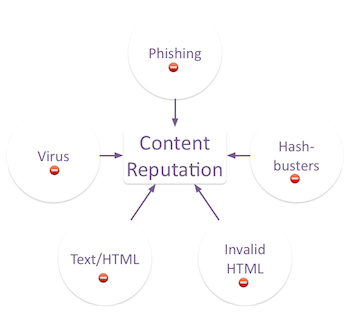Ask Laura: Should we allow tagged addresses?
- laura
- September 30, 2016
- Best practices
Hi Laura,
First of all, I’d like to thank you for the amazing blog. It helps me a lot and I have much fun to read it.
Now I have a question to the google alias addresses.
As you must have known, Google offers alias addresses and you can put any thing between the local part and @gmail.com with a “+” sign
What do you think, what should the onlineshops deal with such address for newsletters?
Should they be acceptable globally? Even “+trash”? Or better we do not use it?
Thanks in advance and best wishes from Germany.
Trash the Tags
Hi, Tags
Thanks for your kind words and for being a loyal blog reader.
Tagged addresses are a subject near and dear to my heart. I’ve been using tagged addresses for almost 20 years now and I love how they help me manage my incoming email and my online identity. I have found so many advantages to using tagged addresses, I can’t imagine ever not using them.
- Tagged addresses let me filter mail effectively. In this case, they make sure I don’t lose mail I want. Every few weeks I go through my inbox and look at what tags are delivering there. I pull them out and update my filters so those messages will bypass spam assassin and my mail client filters and be delivered exactly where I want them to be. Newsletters go into one folder, marketing goes into another, social media notifications go into a third, different mailing lists go into their respective folders. I could not do this as effectively as I do without tags.
- Tagged addresses let me identify phishing. All of my online accounts have tagged addresses. If I get mail “from” that online service and it’s not to that tagged address I know it’s not legitimate and I should not give them any information or click any links.
- Tagged addresses let me keep an eye on spam. There are tagged addresses that I used and stopped using for various reasons. Some were scraped from websites, some were leaked by vendors, others were stolen from ESPs, the list goes on. If I get messages to certain groups of addresses I can monitor a small part of the spam ecosystem. I can see who is scraping the web, buying stolen lists, or other nefarious behavior.
To answer your question, I absolutely think that tagged addresses should be globally acceptable, even when they’re things like +trash. This goes back to senders respecting recipients and being aware that email is a very personal way of interacting with customers. You’re entering their home and their inbox, treat the space with respect.
When people hand over email addresses, the permission that they’re giving you is tied directly to that email address. Permission isn’t transitive. While it may sound appealing, stripping the tag is the same as creating a different address for that person. It’s not a good idea to assume you know better about that person than they do.
You can think about it as compared to phone numbers. I contact your sales team and ask some questions. I leave my work number for followup discussions. An aggressive sales person decides that he isn’t satisfied with talking to me during business hours. Instead, he goes out and discovers my home phone number. Now he starts calling me at home at dinner time to discuss his offer. Most folks would consider that extremely rude, right? Same thing with tagged addresses. I gave you this address to contact me, don’t make changes to it or attempt to contact me at another address.
The other thing to think about is that often folks who use tagged addresses are the most sensitive to spam. They’re reasonably technically savvy, enough to know tagged addresses are a thing and how to use them. If you strip the tag they are not going to treat it very well. I know for me, whenever I get a message to an untagged address I immediately view it as spam. If someone is mailing an untagged address they don’t have permission and they’re spamming. If I received mail at a provider with a “this is spam” button I would hit it. That dings the sender’s reputation and, if enough people do it, can affect inbox delivery.
Respect the tags,
Laura

